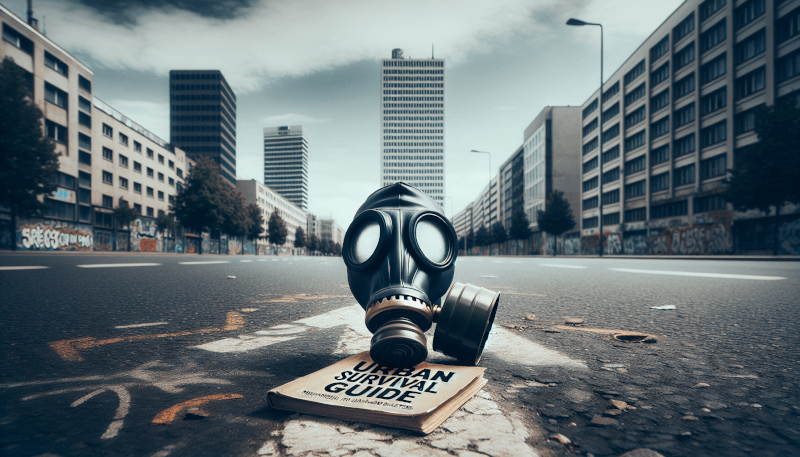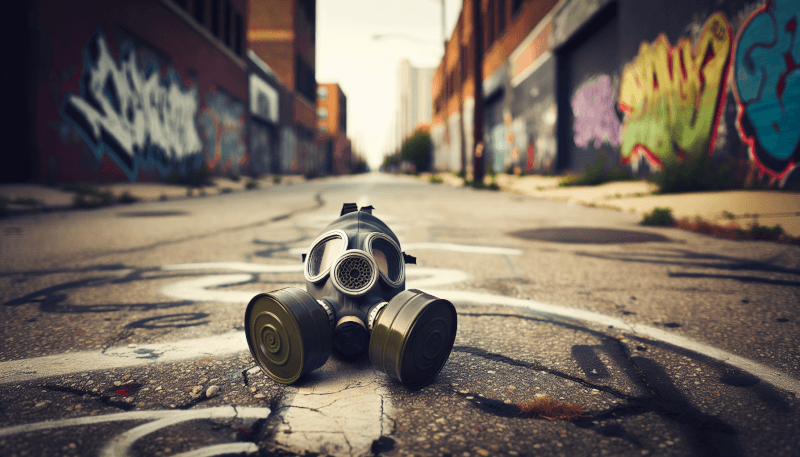In the hustle and bustle of urban living, it’s easy to overlook the potential dangers that could arise from man-made disasters. That’s where the Urban Survival Guide comes in – a comprehensive resource designed to equip you with the knowledge and skills necessary to navigate the chaos and keep yourself safe in the aftermath of such events. From tips on securing shelter to strategies for finding clean water and food, this guide will empower you to face the challenges head-on, ensuring your survival in even the most challenging of circumstances. So, if you’ve ever wondered how to protect yourself in urban environments during times of crisis, join us as we unlock the secrets of urban survival in our concise and informative guide.

Understanding Urban Survival
Living in an urban environment brings about its own unique set of challenges, especially when it comes to surviving during a crisis or disaster situation. Understanding the characteristics of urban environments and the types of man-made disasters that can occur is crucial for your survival. By being prepared and having a plan in place, you can increase your chances of staying safe and navigating through urban landscapes effectively. With this comprehensive guide, you will be equipped with the knowledge and skills necessary to thrive in a post-disaster urban setting.
Characteristics of Urban Environments
Urban environments are characterized by their dense population, infrastructure, and limited resources. The high concentration of people and buildings can make navigating through urban areas challenging, especially during a crisis. With the majority of the population residing in cities, the impact of man-made disasters can be even more devastating. Understanding these characteristics will help you better prepare and adapt to the unique challenges that urban environments present.

Types of Man-Made Disasters
Man-made disasters can take many forms, and being aware of the different types will enable you to anticipate potential threats and take proactive measures to protect yourself and your loved ones. Some common types of man-made disasters include terrorist attacks, riots, power outages, chemical spills, and infrastructure failures. Each type of disaster presents its own set of challenges and requires specific preparation and response strategies. By familiarizing yourself with these types of disasters, you can develop a comprehensive plan tailored to your urban survival needs.
Preparation and Planning
Preparing for urban survival starts with creating a well-stocked urban survival kit. This kit should include essential items such as food, water, first aid supplies, communication devices, and tools for self-defense. Additionally, developing an emergency plan is crucial to ensure everyone in your household knows what to do in the event of a disaster. This plan should include designated meeting points, emergency escape routes, and communication strategies. Lastly, securing your home by reinforcing windows and doors, and having a backup power source is vital for your safety during a crisis.

Surviving in an Urban Environment
Navigating urban landscapes during a disaster can be challenging due to the congestion, limited resources, and potential dangers. Familiarizing yourself with your surroundings, including alternative routes and landmarks, is essential for effective navigation. In addition to navigation, finding water and food sources is crucial for your survival. Knowing where to find safe water sources and how to identify edible plants in urban areas can make a significant difference. Lastly, ensuring personal safety by staying aware of your surroundings, avoiding dangerous areas, and being cautious is crucial in an urban environment.
Communication and Information Gathering
During a disaster, maintaining communication channels with loved ones and staying updated with the latest information is vital. Having multiple means of communication, such as walkie-talkies, radios, and smartphones with backup power, will help ensure you can stay connected. Maintaining a list of emergency contacts and designated meeting points will also make communication easier. Additionally, monitoring news and updates through various sources, such as radio broadcasts and online platforms, will keep you informed about the situation and potential evacuation orders.

Building a Support Network
Forming alliances and communities during a post-disaster urban setting can significantly improve your chances of survival. Joining or creating neighborhood watch groups, communal gardens, or support networks can provide additional resources and skills that can be shared among members. By working together, you can pool your resources, share knowledge, and provide emotional support. Building a support network is essential for long-term survival and creating a sense of community in challenging times.
Adapting to Resource Scarcity
In a post-disaster urban setting, resources such as food, water, and energy can become scarce. Learning how to ration and preserve supplies will help ensure their longevity. Additionally, exploring alternative energy sources such as solar panels or wind turbines can provide a sustainable solution for power generation. Urban gardening and foraging techniques can also help supplement your food supply by growing fruits, vegetables, and herbs in small spaces or foraging for edible plants in urban areas. Adapting to resource scarcity is crucial for long-term survival in an urban setting.

Dealing with Health and Sanitation Issues
Addressing medical emergencies and maintaining hygiene and sanitation are critical for your well-being during a disaster. Having a well-stocked first aid kit and knowledge of basic medical procedures can help you treat injuries or illnesses that may occur. Proper sanitation practices, such as handwashing and waste disposal, can prevent the spread of germs and diseases. Being aware of potential health hazards in urban environments, such as contaminated water sources or air pollution, will also help you minimize risks to your health.
Managing Security and Self-Defense
Ensuring the security of your property and personal safety is crucial in an urban environment, particularly during a crisis. Securing your property by reinforcing doors and windows, installing security systems, and having a plan for fortifying your home can deter potential threats. Additionally, learning self-defense techniques can empower you to protect yourself and your loved ones in dangerous situations. Being aware of your surroundings, avoiding confrontations, and staying alert are also effective strategies for managing security in urban environments.
Thriving in a Post-Disaster Urban Setting
Moving beyond mere survival, thriving in a post-disaster urban setting involves building sustainable systems and creating barter networks. Building sustainable systems, such as rainwater harvesting or composting, can provide a long-term solution for resource management. Creating barter networks with other survivors can help facilitate the exchange of goods and services, ensuring everyone’s needs are met. Additionally, developing survival skills such as fire-making, shelter construction, and basic first aid can further enhance your ability to thrive in a challenging environment.
Staying Positive and Focused
Mental resilience plays a vital role in surviving and thriving in a post-disaster urban setting. Keeping a positive mindset, focusing on solutions, and finding purpose and motivation are essential for maintaining mental well-being. Engaging in activities that bring you joy, practicing mindfulness, and connecting with others in your support network can help alleviate stress and boost morale. It is important to remember that while the challenges may be tough, you have the strength and resources within you to overcome them.
In conclusion, understanding urban survival is crucial for navigating and thriving in a post-disaster urban setting. By being prepared, planning ahead, adapting to resource scarcity, and building support networks, you can increase your chances of not only surviving but also thriving during challenging times. With the right knowledge, skills, and mindset, you can keep yourself and your loved ones safe and find purpose and motivation even in the most difficult circumstances. Remember, urban survival is not just about physical preparedness; it is about resilience, adaptability, and a positive attitude.


